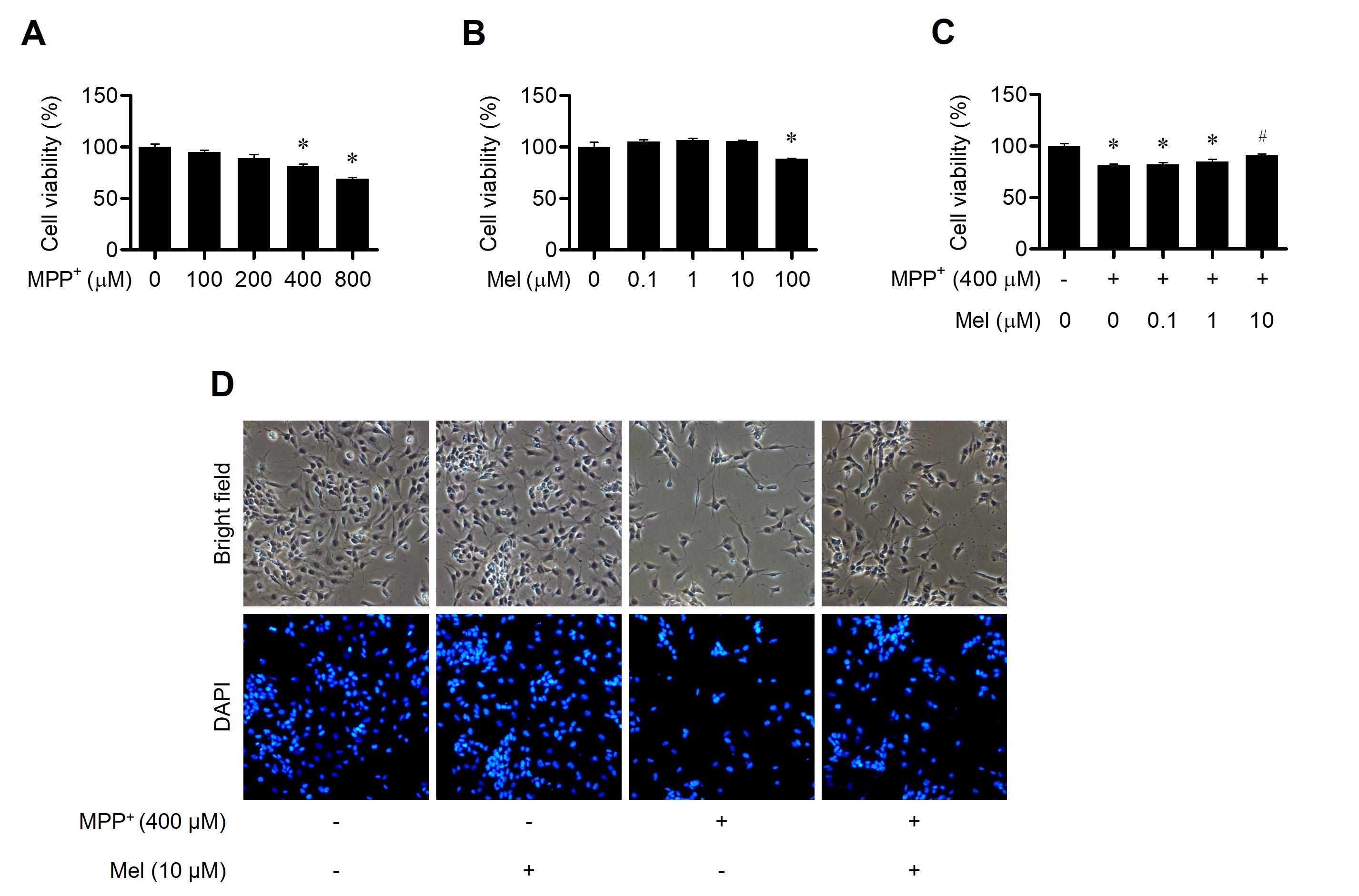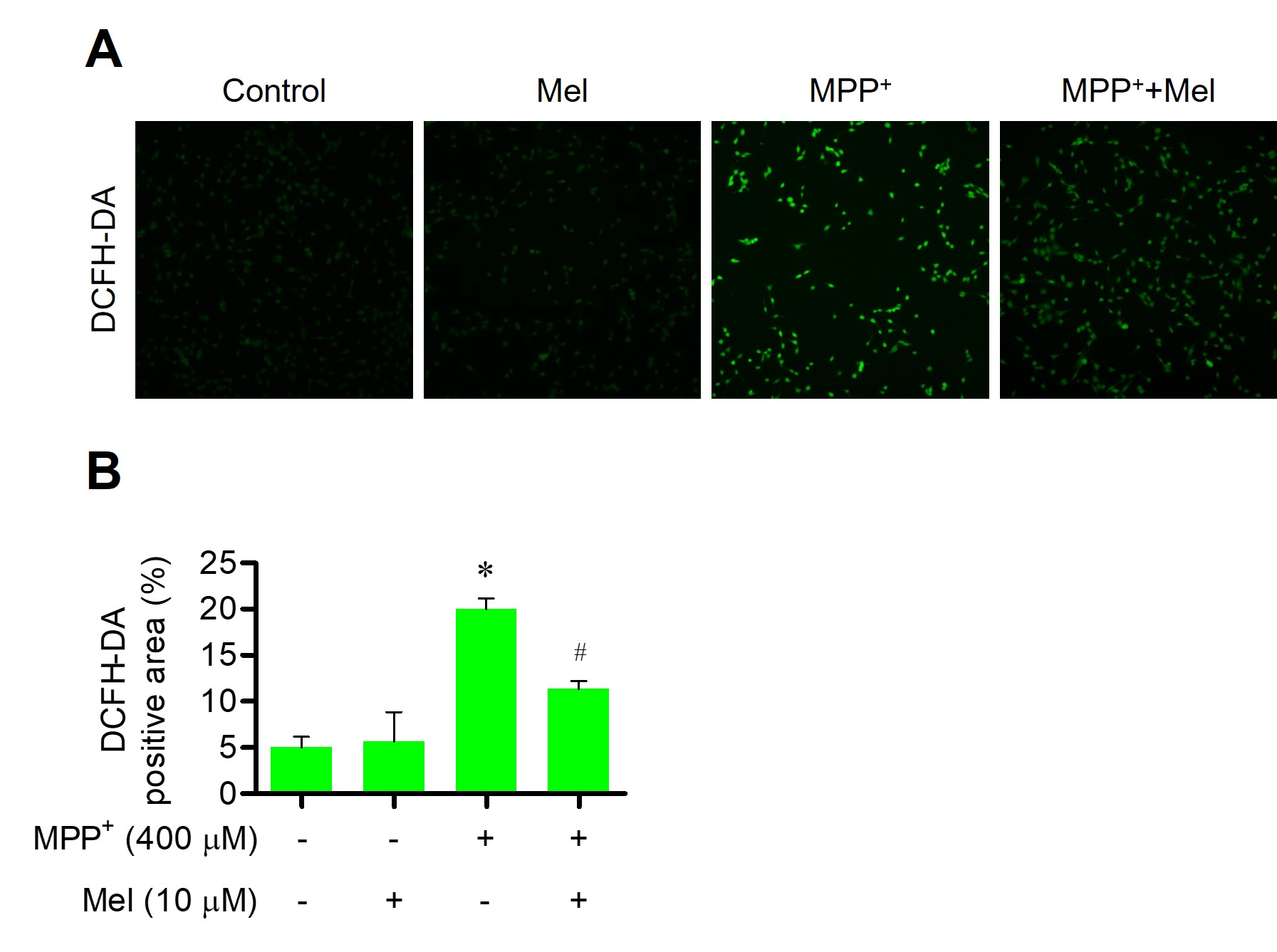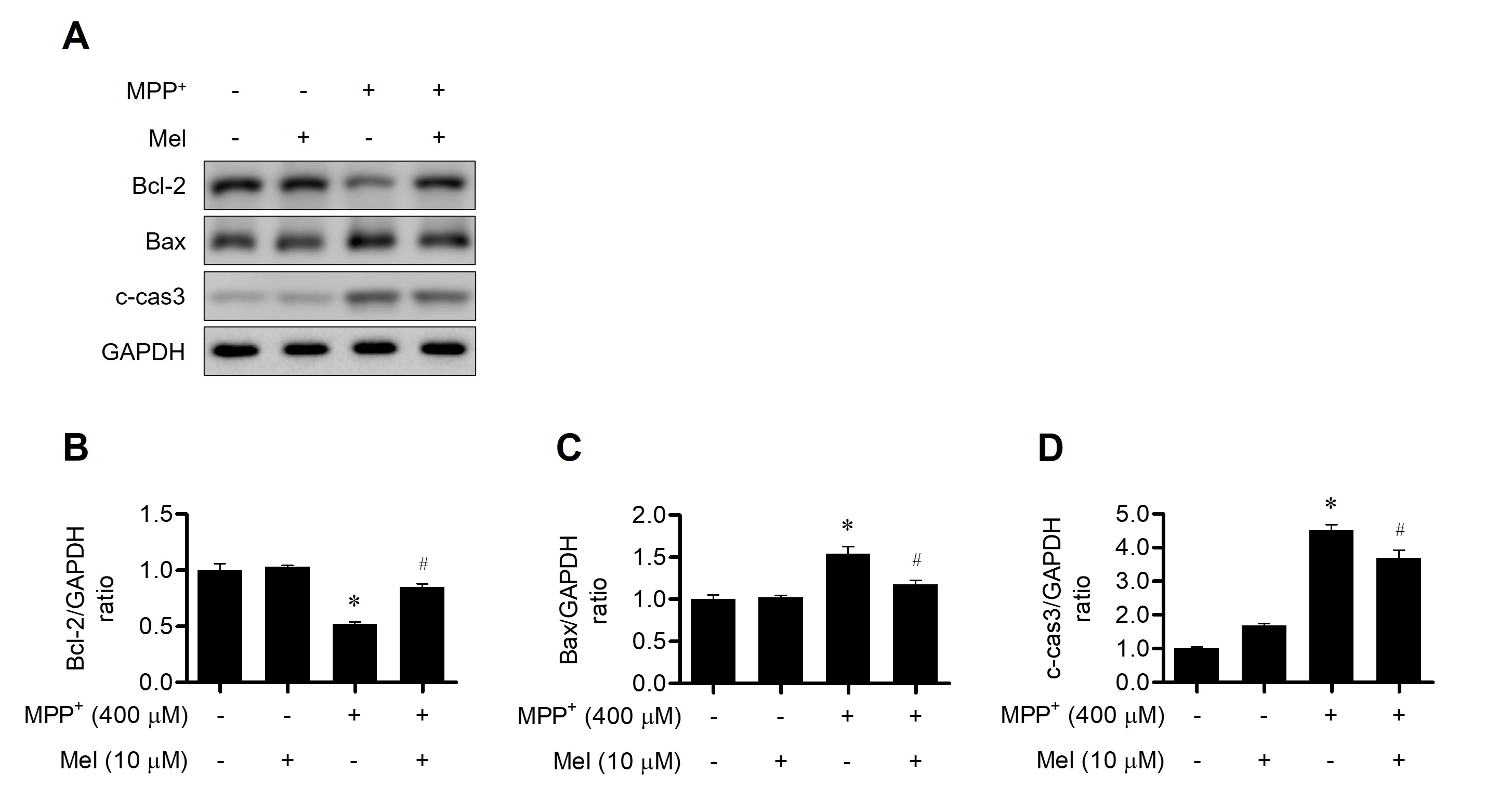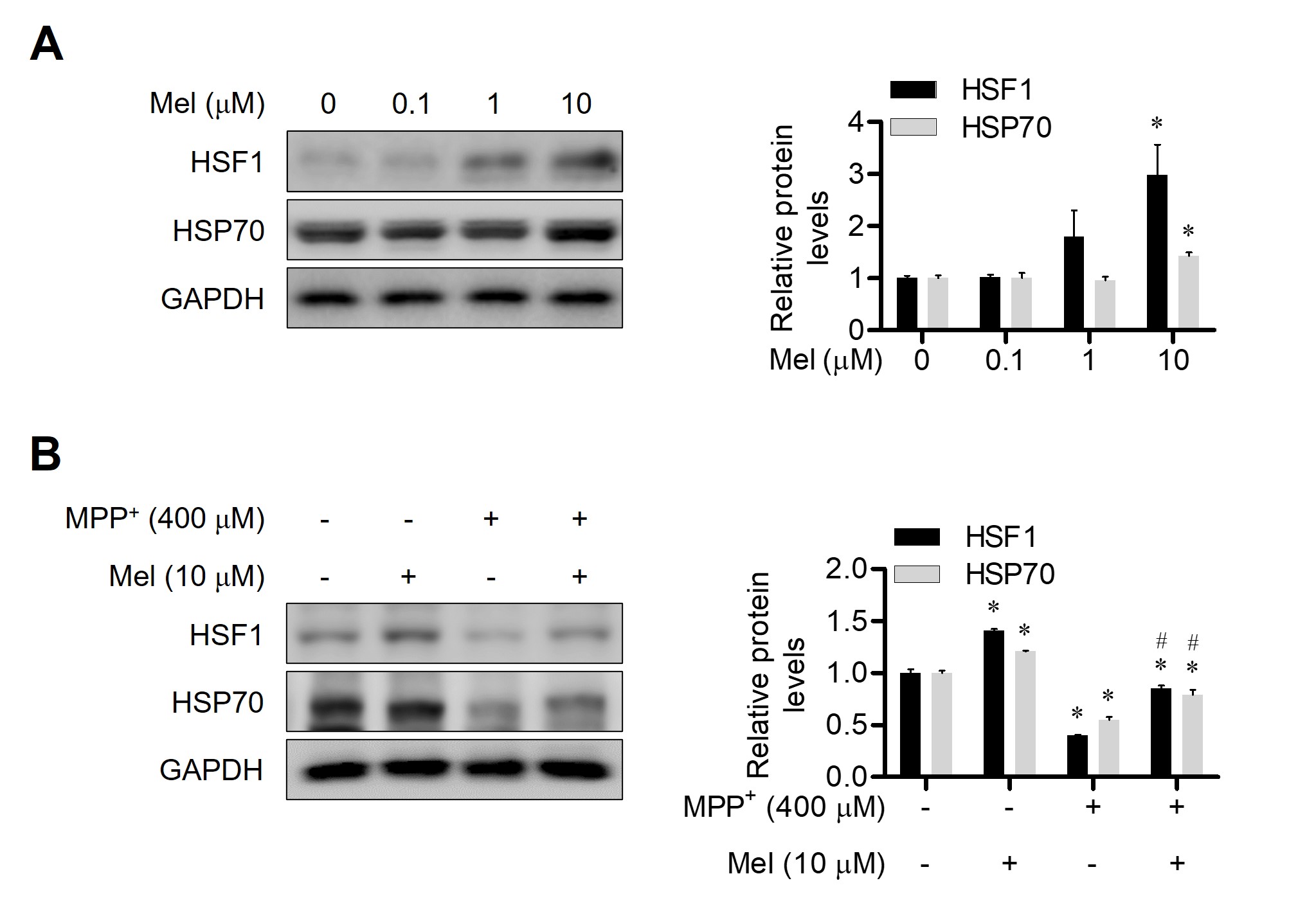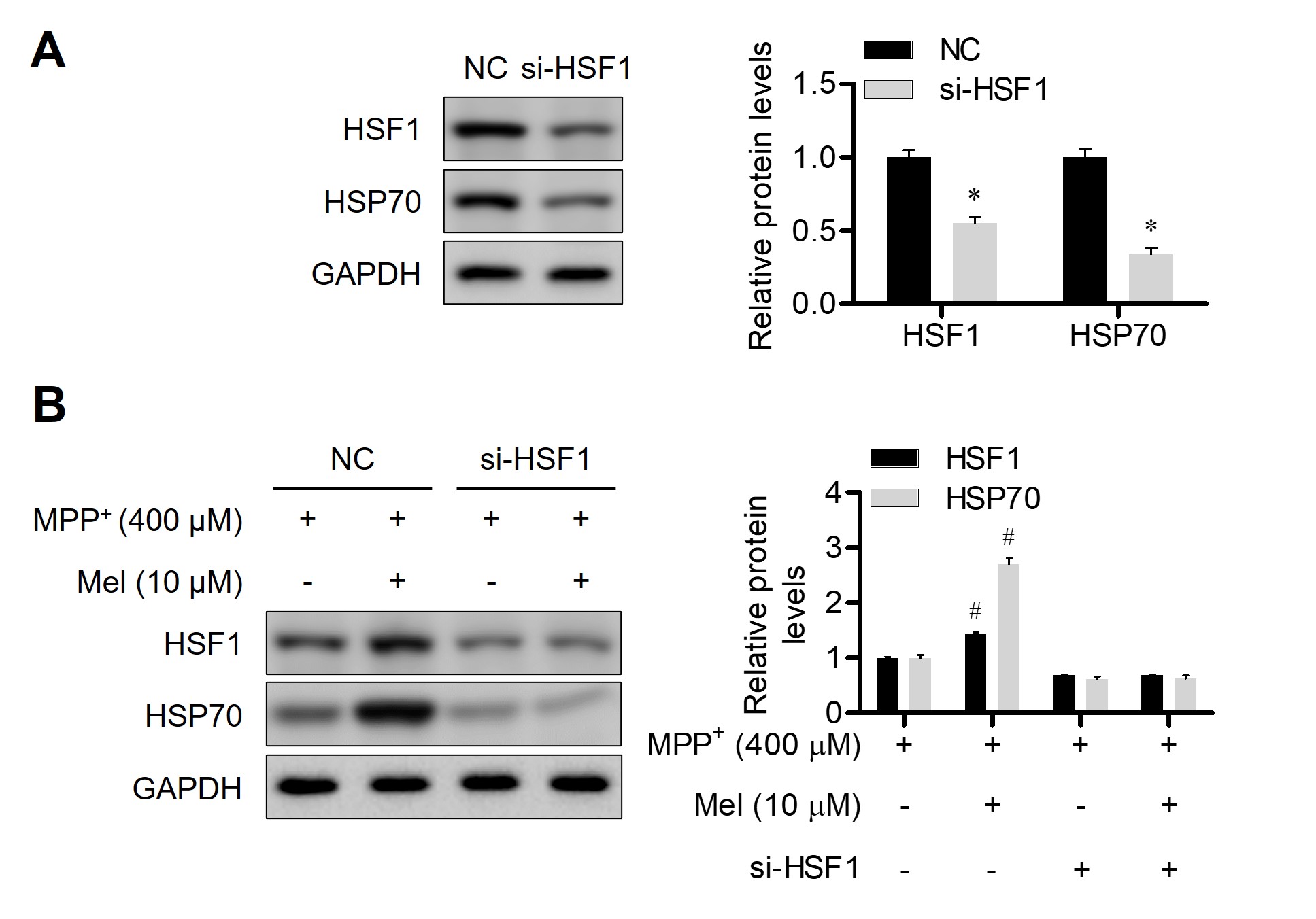Objective: The objective of this study was to investigate the protective properties of melatonin in an in vitro Parkinson’s disease (PD) model, especially focusing on its underlying mechanism via heat shock proteins (HSPs).
Background: HSPs play an essential role in preventing misfolding and aggregation of proteins as molecular chaperones as well as in providing resistance to oxidative stress, inflammation, and apoptosis that involve in PD pathogenesis. Melatonin, a potent antioxidant with a wide variety of physiologic functions, might have beneficial effects in PD. However, the neuroprotective mechanism of melatonin in PD still remains inconclusive and few investigations to verify the link between melatonin and HSPs have been performed in experimental PD models.
Method: A 1-methyl-4-phenylpyridimium (MPP+)-induced neurotoxicity model was established with retinoic acid (RA)-differentiated SH-SY5Y cells. Cell viability and intracellular reactive oxygen species (ROS) levels were measured using MTT and the cell-permeant fluorescent probe DCFH-DA, respectively. Western blotting was performed to determine the levels of mitochondrial apoptotic markers such as Bax, Bcl2, and cleaved caspase-3, as well as HSP70 and heat shock factor-1 (HSF1).
Results: Melatonin reduced the MPP+-induced loss of cell viability [figure1] and levels of intracellular ROS [figure2] and mitochondrial apoptotic signaling proteins [figure3]. RA-differentiated SH-SY5Y cells exposed to melatonin and MPP+ exhibited increased expression of HSP70 and HSF1 with those exposed to MPP+ alone [figure4]. However, siRNA-mediated downregulation of HSF1 significantly attenuated the protective effects introduced by melatonin in the MPP+-induced PD model [figure5].
Conclusion: Our findings revealed the protective roles of melatonin in a model of PD pathogenesis. Melatonin can rescue the toxic effects of MPP+ on dopaminergic neuronal cell death via upregulation of the HSF1/HSP70 pathway. Further experimental studies would verify the therapeutic relevance of melatonin in association with HSP70 and HSF1 partners for the prevention and deceleration of PD-like neurodegeneration.
To cite this abstract in AMA style:
YJ. Jung, E. Oh, A. Kim, H. Choi. Protective mechanism of melatonin via heat shock protein in the MPP+-induced in vitro Parkinson’s disease model [abstract]. Mov Disord. 2022; 37 (suppl 2). https://www.mdsabstracts.org/abstract/protective-mechanism-of-melatonin-via-heat-shock-protein-in-the-mpp-induced-in-vitro-parkinsons-disease-model/. Accessed December 30, 2025.« Back to 2022 International Congress
MDS Abstracts - https://www.mdsabstracts.org/abstract/protective-mechanism-of-melatonin-via-heat-shock-protein-in-the-mpp-induced-in-vitro-parkinsons-disease-model/

